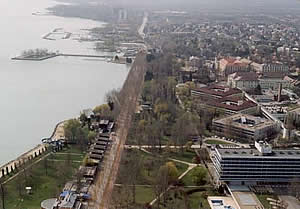
It is surrounded by gently sloping hills and which is situated on the northern shore of lake Balaton. Tourists arriving in Balatonfüred - either by rail, on road or by water - can feel the well-balanced mixture of past and present at once. First they are attracted by the geographical conditions of the town which has been radiating good Pannonian spirits for centuries: it is surrounded by gentle mountains from the north and lake Balaton from the south. It is an ancient settlement which was already inhabited during the reign of the Roman Empire. Visitors can come across the relics of the past at every step.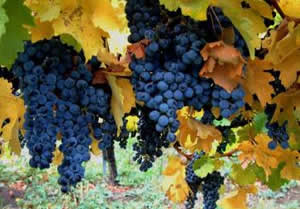
Ancient residential districts, old buildings, churches, intimate vineyards, parks and old trees send their message to the people of our present time.
Its name was first mentioned in the land register of the Abbey of Tihany in 1211. There were several settlements in the Middle Ages in the place of the present Balatonfüred. First of all Füred which still exists but which has had a major role only since the age of reform. To the west from it you can find Papsoka - it has been called Siske since the 14th century - which soon was united with Füred. To the north from Füred the Kéki valley has preserved the name of the former village of Kék (Blue).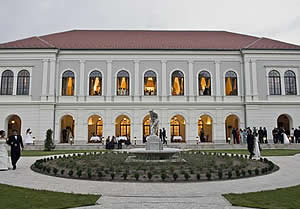 This settlement did not survive to see the Ottoman occupation of Hungary. Arács that constitutes the north-eastern part of Füred was an independent village until 1954. The settlement of Magyaré that is situated to the south-east from Arács was 'absorbed' by Arács by the end of the Middle Ages.
This settlement did not survive to see the Ottoman occupation of Hungary. Arács that constitutes the north-eastern part of Füred was an independent village until 1954. The settlement of Magyaré that is situated to the south-east from Arács was 'absorbed' by Arács by the end of the Middle Ages.
The historical traditions of Füred always determine the lifestyle and attitude of its residents and guests. Its touristic history dates back to centuries, and after it had been declared a spa in the first half of the 1700s it immediately found itself in the limelight. It has been the first spa of Hungary since 1971 and the 'International Town of Grape and Wine'. 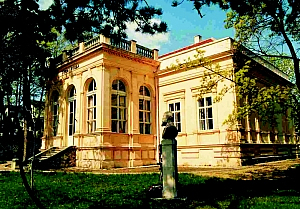 Its fame mainly originates from its mediterranean-like climate and mineral springs. Today the water of the mineral springs is used by the State Hospital for Heart Diseases for therapeutic purposes. You can taste the famous sour water of Balatonfüred at the Kossuth spring, the Berzsenyi well, the Ernő Szekér spring and the Schneider well. Many people suffering from heart diseases have regained their health in the State Hospital for Heart Diseases. So has the Nobel-prize Hindoo poet Rabindranath Tagore after whom a promenade was named on the shore of the lake.
Its fame mainly originates from its mediterranean-like climate and mineral springs. Today the water of the mineral springs is used by the State Hospital for Heart Diseases for therapeutic purposes. You can taste the famous sour water of Balatonfüred at the Kossuth spring, the Berzsenyi well, the Ernő Szekér spring and the Schneider well. Many people suffering from heart diseases have regained their health in the State Hospital for Heart Diseases. So has the Nobel-prize Hindoo poet Rabindranath Tagore after whom a promenade was named on the shore of the lake.
The town is incredibly rich in historical sights. Most of them were rebuilt and renovated. Some of them might play a different role as compared to their function in the past but they definitely belong to the cultural life of Balatonfüred. 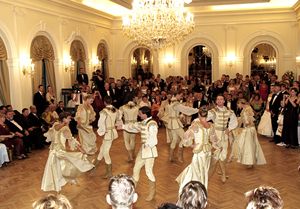 There are numerous famous villas and mansions in the town whose owners contributed a lot to the aspect of Balatonfüred with their presence and brought the name of the town into repute.
There are numerous famous villas and mansions in the town whose owners contributed a lot to the aspect of Balatonfüred with their presence and brought the name of the town into repute.
Among the architectural masterpieces of the 18th centuries you can find the Nagyvendéglő (Big Inn) which is called Hotel Árkád today, the State Hospital for Heart Diseases, the house built on the Lajos Kossuth spring, the larger house of Ádám Horváth Pálóczi's and the mansion of Ferenc Széchenyi which all influence the atmosphere of the town even these days.
Balatonfüred started to develop in the 1800s, in the reform era. It became a popular meeting place for progressive politicians and artists; its historical and cultural significance was at its peak at that time. 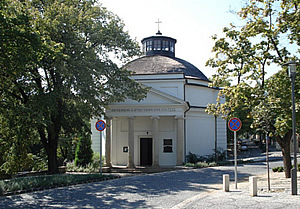 The town has numerous monuments, historical buildings and traditions of that time: in 1825 the first Anna-ball was organized in the Horváth house. In 1831 from donations and with the help of the Abbey and the people of this region Sándor Kisfaludy opened here the first Transdanubian stone theatre, the home of the Hungarian language in a period when the German was the official language in Hungary. The reformed-age atmosphere of the historical part of the town is enriched by the Lujza Blaha villa which was built in 1816 in classicistic style where the famous Hungarian prima donna of the turn of the century, the so-called 'nightingale of the nation' spent her summers for 23 years.
The town has numerous monuments, historical buildings and traditions of that time: in 1825 the first Anna-ball was organized in the Horváth house. In 1831 from donations and with the help of the Abbey and the people of this region Sándor Kisfaludy opened here the first Transdanubian stone theatre, the home of the Hungarian language in a period when the German was the official language in Hungary. The reformed-age atmosphere of the historical part of the town is enriched by the Lujza Blaha villa which was built in 1816 in classicistic style where the famous Hungarian prima donna of the turn of the century, the so-called 'nightingale of the nation' spent her summers for 23 years.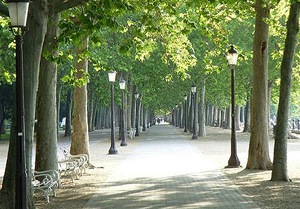 The building is a hotel and a restaurant today. The famous spa-doctor and owner of the famous Huray-houses István Huray also had a summer house here. However, the Dory-villa was said to be the most beautiful of the summer-houses built at this time. It is worth seeing. A round building with a dome and a portico with Ionic columns strikes the eye at the corner of the Jókai and Lujza Blaha streets. The Round Church, which was designed by Antal Fruhman taking the Roman Pantheon as its basis, was built in 1850. The Jókai villa was built in 1870 in early-eclectic style. A permanent exhibition in the building shows the fixtures of the villa and the life of the greatest story-teller of the nation. The Reformed Church, the Catholic Church and the newly built Evangelistic Church as the ornaments of the upper part of the town rise to the air guarding the peace of the town.
The building is a hotel and a restaurant today. The famous spa-doctor and owner of the famous Huray-houses István Huray also had a summer house here. However, the Dory-villa was said to be the most beautiful of the summer-houses built at this time. It is worth seeing. A round building with a dome and a portico with Ionic columns strikes the eye at the corner of the Jókai and Lujza Blaha streets. The Round Church, which was designed by Antal Fruhman taking the Roman Pantheon as its basis, was built in 1850. The Jókai villa was built in 1870 in early-eclectic style. A permanent exhibition in the building shows the fixtures of the villa and the life of the greatest story-teller of the nation. The Reformed Church, the Catholic Church and the newly built Evangelistic Church as the ornaments of the upper part of the town rise to the air guarding the peace of the town. 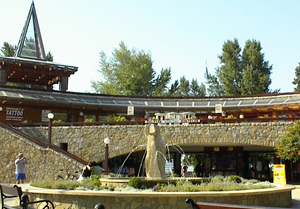
The present-day old town - the old village and Balatonarács which was annexed to it in 1954 - has a significant number of valuable monuments. On both sides of the Lajos Kossuth street, the street that leads to the old village, you can find single-storey and multi-storey buildings close to one another. In the old village - or as it is called nowadays the Old Town - the following buildings marked with a plaque still preserve the traditional shapes. The Siske street is that part of the Old Town where the end of the street leads into the forest. From here starts an esplanade which is a pleasant beauty spot and walking path of Balatonfüred.
One of the most well-known buildings of Füred is the Gombás-mension. 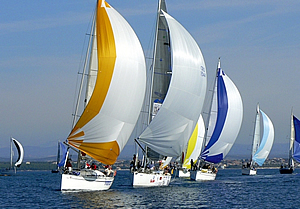 Those noble people used to build houses like this around lake Balaton who liked beauty and who had good taste. In Balatonfüred, which was one of the most popular meeting places of the nobility of Zala county, there are plenty of these late Baroque houses not far from each other giving a very vivid touch to the panorama of the region of Füred
Those noble people used to build houses like this around lake Balaton who liked beauty and who had good taste. In Balatonfüred, which was one of the most popular meeting places of the nobility of Zala county, there are plenty of these late Baroque houses not far from each other giving a very vivid touch to the panorama of the region of Füred







